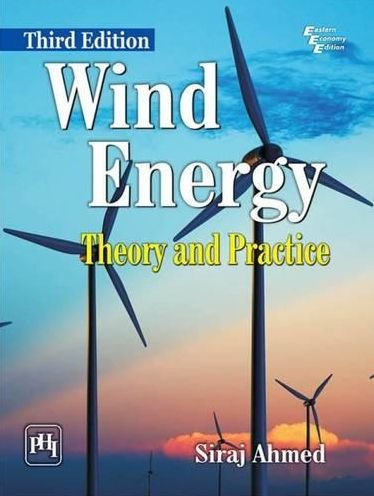WIND ENERGY: THEORY AND PRACTICE
In the contemporary world, wind energy is emerging as one of the most viable alternatives to meet the challenge of increasing energy demand, particularly for electrical energy generation. It is clean, fuel-free and available almost in every country in the world and in abundance in off-shore. This book, now in its Third Edition, covers most of the essential engineering principles, theories and best practices for wind energy development for electricity generation with clear emphasis on state-of-the-art. In this edition, recent developments in wind energy are covered. It includes sections on remote sensing application and re-powering.This comprehensive book on wind energy is intended as a text for the undergraduate and postgraduate students of Mechanical/Electrical Engineering and students pursuing Energy Studies. It will also serve as a handbook and ready reference for practicing engineers and professionals in the field of wind energy.KEY FEATURESDescribes technological advances in wind energy.Deals with wind resource assessment methodology, instrumentation and advanced techniques.Discusses the concepts of aerodynamics for wind turbine blade and rotor.Provides in detail the design concepts for modern horizontal axis wind turbine.Covers layout design, micro-siting and modelling of wind farms. Analyzes the economics of wind energy projects for electricity generation.Focuses on the impact of wind energy on the environment.
1123122078
WIND ENERGY: THEORY AND PRACTICE
In the contemporary world, wind energy is emerging as one of the most viable alternatives to meet the challenge of increasing energy demand, particularly for electrical energy generation. It is clean, fuel-free and available almost in every country in the world and in abundance in off-shore. This book, now in its Third Edition, covers most of the essential engineering principles, theories and best practices for wind energy development for electricity generation with clear emphasis on state-of-the-art. In this edition, recent developments in wind energy are covered. It includes sections on remote sensing application and re-powering.This comprehensive book on wind energy is intended as a text for the undergraduate and postgraduate students of Mechanical/Electrical Engineering and students pursuing Energy Studies. It will also serve as a handbook and ready reference for practicing engineers and professionals in the field of wind energy.KEY FEATURESDescribes technological advances in wind energy.Deals with wind resource assessment methodology, instrumentation and advanced techniques.Discusses the concepts of aerodynamics for wind turbine blade and rotor.Provides in detail the design concepts for modern horizontal axis wind turbine.Covers layout design, micro-siting and modelling of wind farms. Analyzes the economics of wind energy projects for electricity generation.Focuses on the impact of wind energy on the environment.
5.98
In Stock
5
1

WIND ENERGY: THEORY AND PRACTICE

WIND ENERGY: THEORY AND PRACTICE
5.98
In Stock

Product Details
| ISBN-13: | 9788120351639 |
|---|---|
| Publisher: | PHI Learning |
| Publication date: | 10/15/2015 |
| Sold by: | Barnes & Noble |
| Format: | eBook |
| File size: | 16 MB |
| Note: | This product may take a few minutes to download. |
About the Author
From the B&N Reads Blog
